In early November, the corpus of catalogues raisonnés of works in the Royal Collection will be joined by Chinese and Japanese Works of Art in the Collection of Her Majesty The Queen. This will be the first catalogue to examine non-European art, a feat accomplished after many years, led by the author John Ayers and numerous colleagues at Royal Collection Trust, including myself. The catalogues raisonnés are produced in line with Royal Collection Trust’s charitable aims to care, conserve and publish the Royal Collection, raising awareness and increasing knowledge of its remarkable holdings.
A collection as complex, multifaceted, and ancient as the British Royal Collection is perhaps better described as a series of overlapping collections, formed not by evolving curatorial impulses, contemporary museological guidelines, or an acquisitions committee. Instead, its shape has been decided by the requirements and tastes of successive monarchs and members of the Royal Family.
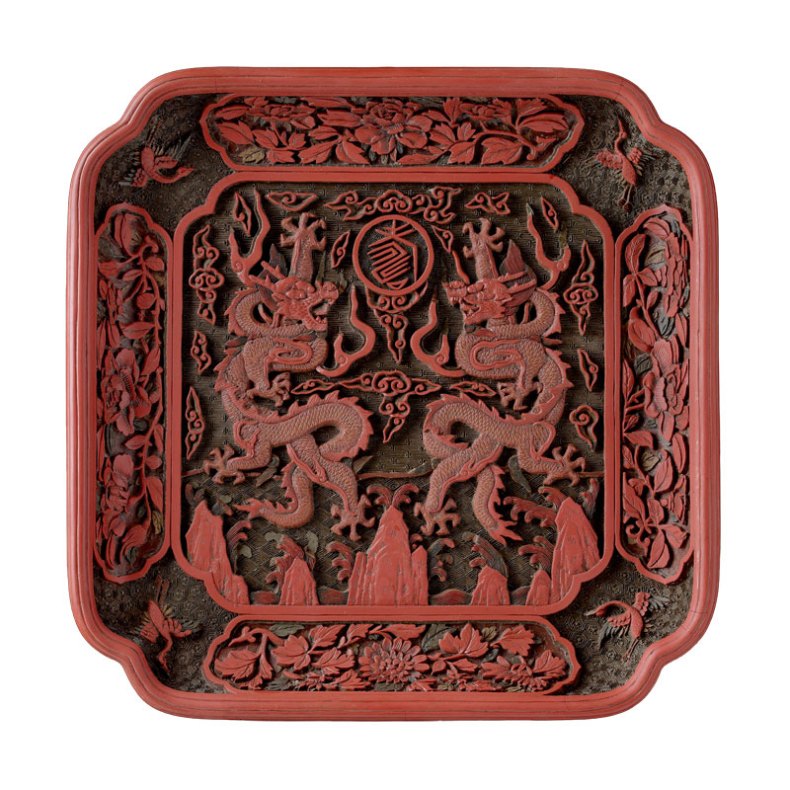
Imperial tray (one of four), Chinese, mark and reign of Qianlong (1736–95). The Royal Collection
A distinctive feature of the collection is that it remains in use, and many of the objects included in this catalogue continue to perform the role for which they were originally acquired. For most of them, that means very grand furnishing. But beyond providing a palatial backdrop, many of the objects in this catalogue embody one of two concepts. Firstly, almost all the objects that were bought were collected as ‘exotica’, signifying a particular way of thinking about the Far East. Mary II’s obsession with blue and white porcelain was bound up with fashion as much as demonstrating an interest in China. Secondly, a significant number of objects were presented as official gifts to British rulers by Chinese and Japanese potentates, and therefore represent, in object form, diplomatic relations between those nation states and Britain. Imperial Chinese lacquer boxes and trays presented by the Qianlong Emperor to George III through Lord Macartney’s embassy mission in 1792–94 survive in the collection; other gifts of jade and porcelain (many from the Qianlong period) were presented to Queen Victoria by Dowager Empress Cixi – two great women, empresses both, presiding over dramatically different domains, one of which was ascendant and the other in decline – at her Golden and Diamond Jubilees in 1887 and 1897, as well as during diplomatic tours. The first visit made by a European prince to the Meiji Emperor in Japan was when Alfred, Duke of Edinburgh, visited in 1869. This was followed by visits to China and Japan in 1881 by Prince Albert Victor, Duke of Clarence and his brother Prince George of Wales, later George V. Gifts of armour and lacquer from both visits survive in the collection.
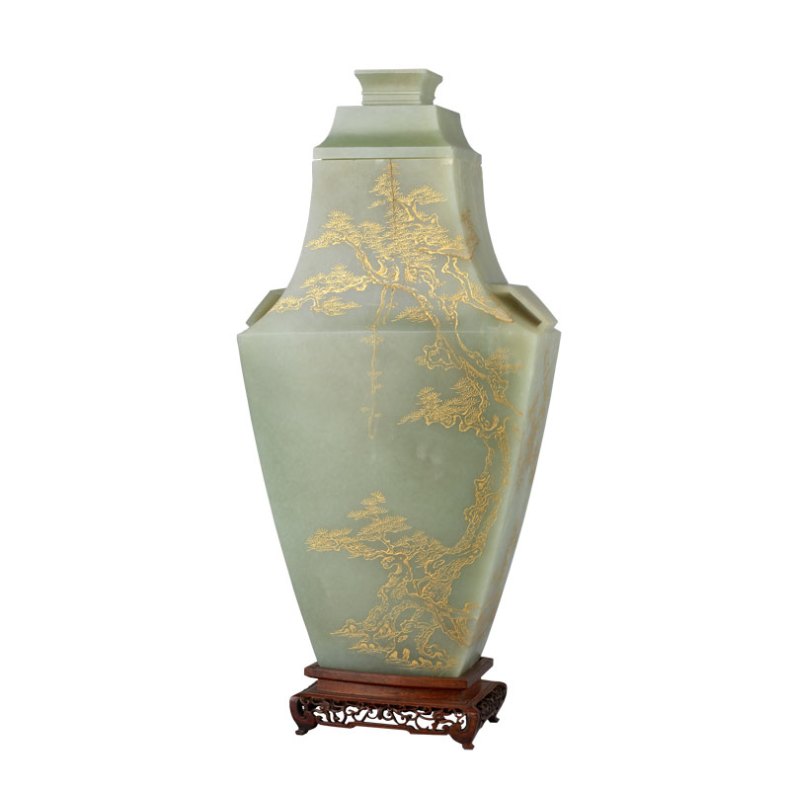
Vase, cover and wood stand, Chinese, reign of Qianlong. The Royal Collection
For this catalogue project, more than 2,000 objects of Chinese and Japanese porcelain (some fitted with European gilt-bronze mounts), lacquer, jade, enamel and ivory have been catalogued, researched, conserved, and photographed. The Herculean task of cataloguing this wide-ranging and widely spread collection fell to John Ayers, founder of and former keeper of the Far Eastern Department (as it was then known) at the Victoria and Albert Museum from 1970 until 1982. His amanuensis through much of the cataloguing, which began in earnest in 2000, was the Royal Collection Trust’s Melanie Wilson, inventory clerk at Buckingham Palace and latterly, catalogue raisonné assistant. Without her guidance, such a widely dispersed group of objects would not have been covered so accurately or comprehensively.
The bulk are to be found in Windsor Castle, the Palace of Holyroodhouse, and Buckingham Palace, but others are in Hampton Court Palace and Kensington Palace, as well as further afield: at Birkhall in Aberdeenshire, two porcelain vases imitating red lacquer turned out to be of some interest, and were included; a pair of newly discovered porcelain stands at Bagshot Park in Surrey were also added to the catalogue. An assessment of the Flower Room at Buckingham Palace shed light on a gilt-bronze-mounted vase, and a gilt-bronze-mounted clock took its place in the book while cataloguing occurred in the horological workshop at the Palace. Other objects were included following routine inventory checking – such as a magnificent Japanese writing-table, or shodhana, at Sandringham House.
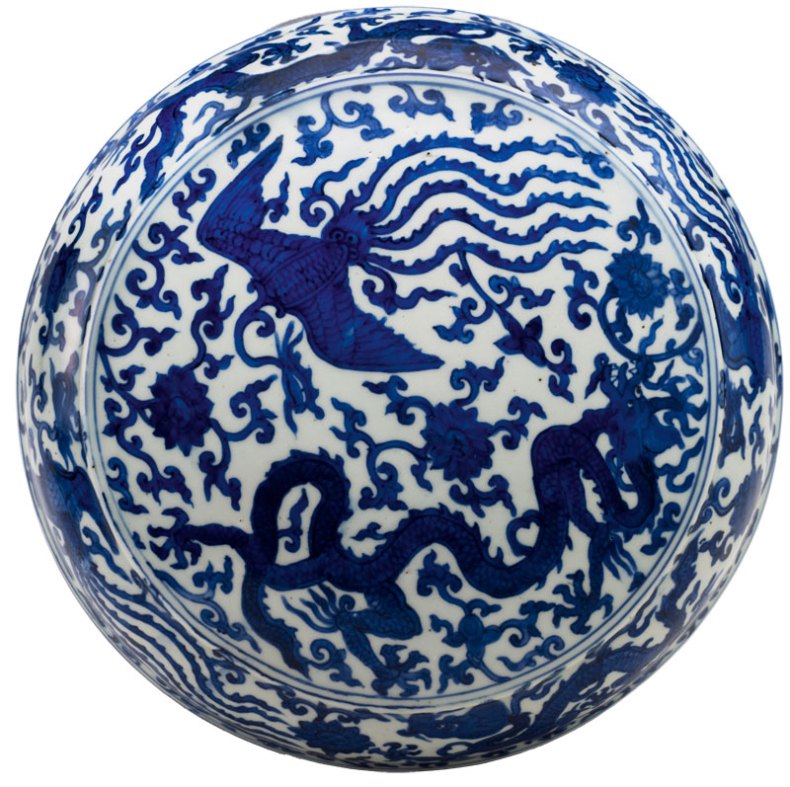
Dragon-and-phoenix box and cover (depicted), Chinese, mark and reign of Longqing (1567–72). The Royal Collection
Besides cataloguing, the cleaning, conservation, and photography of a great many objects has been a vast task in itself. Groups of objects at palaces such as Hampton Court and the Palace of Holyroodhouse were cleaned and photographed on site and quickly returned to their homes, or if complex conservation work was required, brought into Royal Collection Trust’s workshops. In 2014, with a large number of objects still to be cleaned and photographed, an in situ campaign of cleaning and photography was enacted: during April at Buckingham Palace (when the Queen remains in residence at Windsor Castle for Easter Court) and through the summer at Windsor.
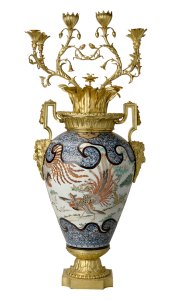
Jar mounted as six-branched candelabra (one of a pair), (1690–1730), Japanese (mount: third quarter 18th century, France, with later English additions). The Royal Collection
As part of this extensive conservation programme – for which every object was examined and, if necessary, cleaned and conserved – the gilt-bronze mounts were removed and examined for constructional clues, marks, and cataloguing. A selection of these were chosen to undergo X-ray fluorescence (XRF) testing, which indicates the breakdown of elements which make up the alloy (published as an appendix). Where necessary, further specialist conservation assistance was called upon: some complex repairs of very large jardinières, for instance, were handled by Penny Bendall, an independent conservator of ceramics. Simpler tasks such as conserving a set of Chinese lacquer boxes, some with minor damage to the feet, were handled as a complete conservation project by a number of conservation interns. The fairly simple, but time-consuming and essential job of cleaning a number of large-scale gilt-bronze mounts, many of which were coated with years of accrued dust and dirt and completely lacking their original lustre – and subtlety – within the glittering palace interiors, fell to a team of palace attendants and housekeeping staff overseen by David Wheeler, senior conservator of decorative arts; they undertook basic cleaning of some of the metal components.
The catalogue, in three volumes, will be published at the beginning of November. It opens up a new frontier of non-European art in the study of this fascinating collection.
From the November issue of Apollo: preview and subscribe here.
Unlimited access from just $16 every 3 months
Subscribe to get unlimited and exclusive access to the top art stories, interviews and exhibition reviews.

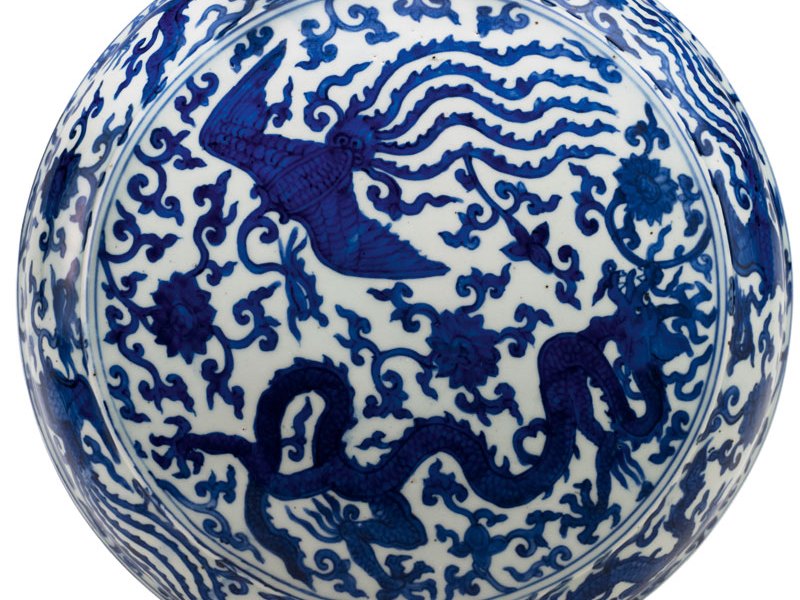
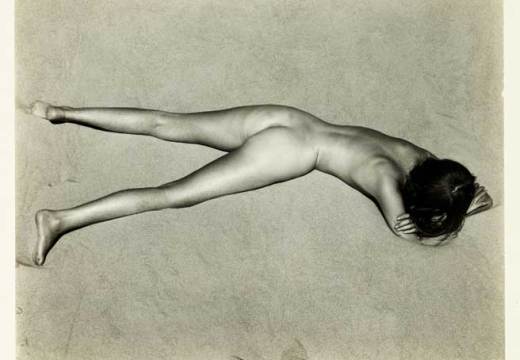
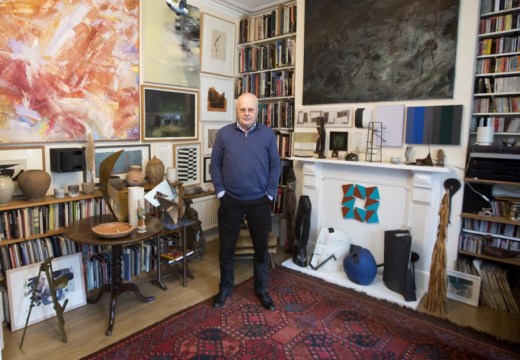
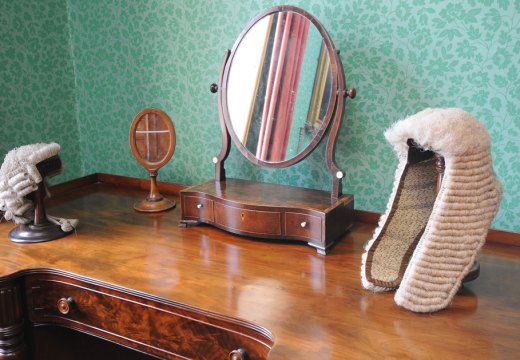









![Masterpiece [Re]discovery 2022. Photo: Ben Fisher Photography, courtesy of Masterpiece London](http://www.apollo-magazine.com/wp-content/uploads/2022/07/MPL2022_4263.jpg)
Has the Fitzwilliam got its rehang right?